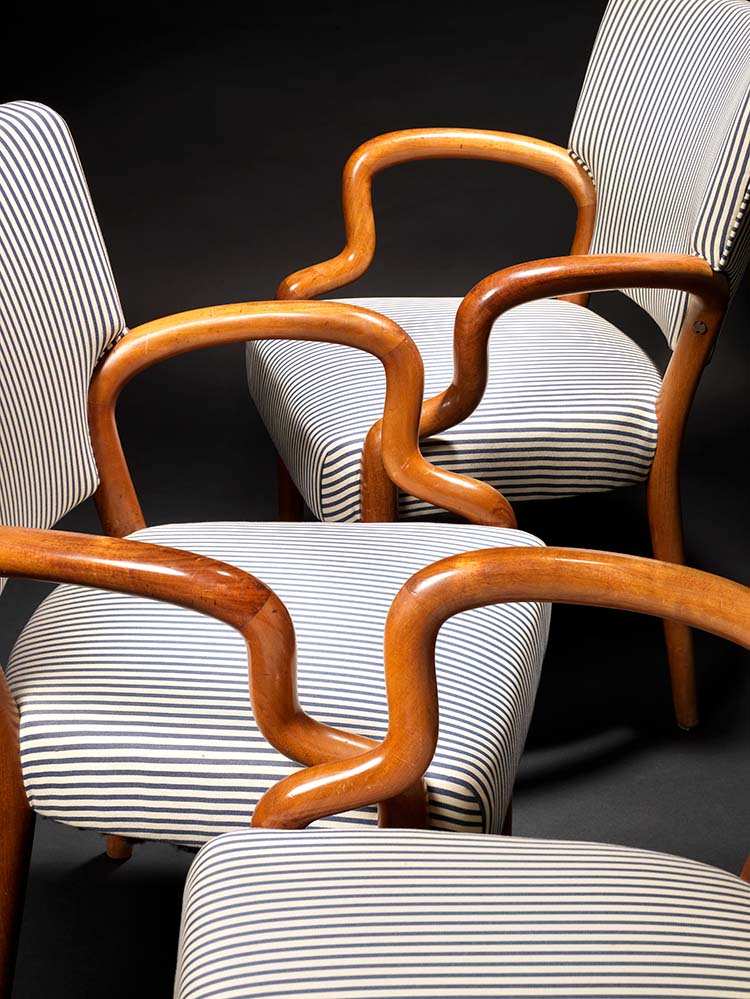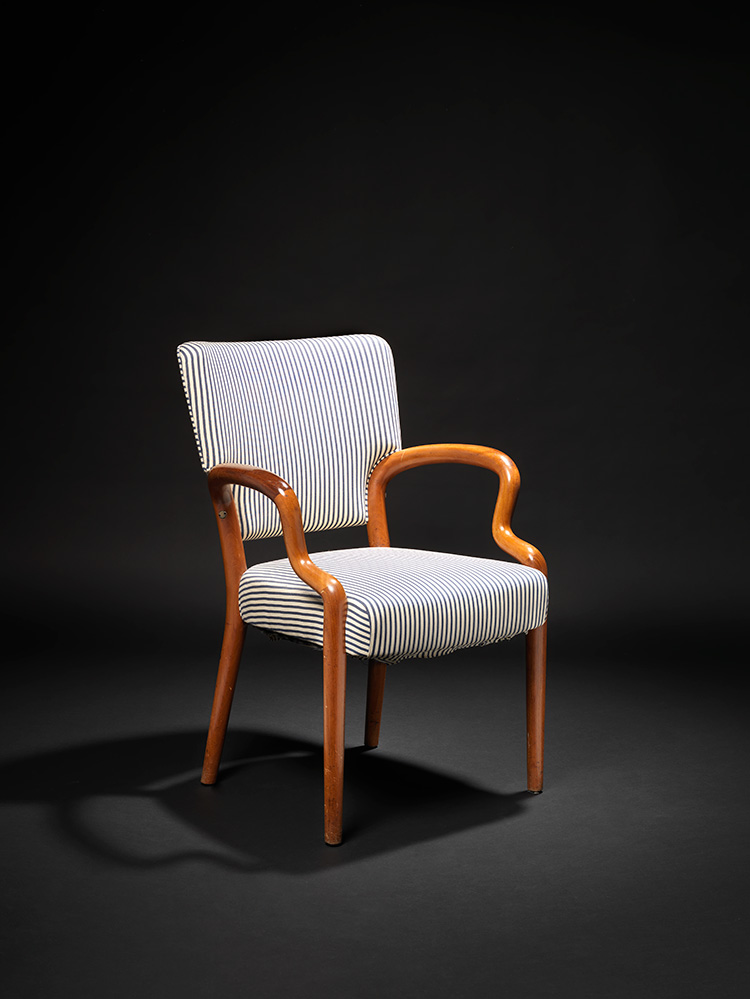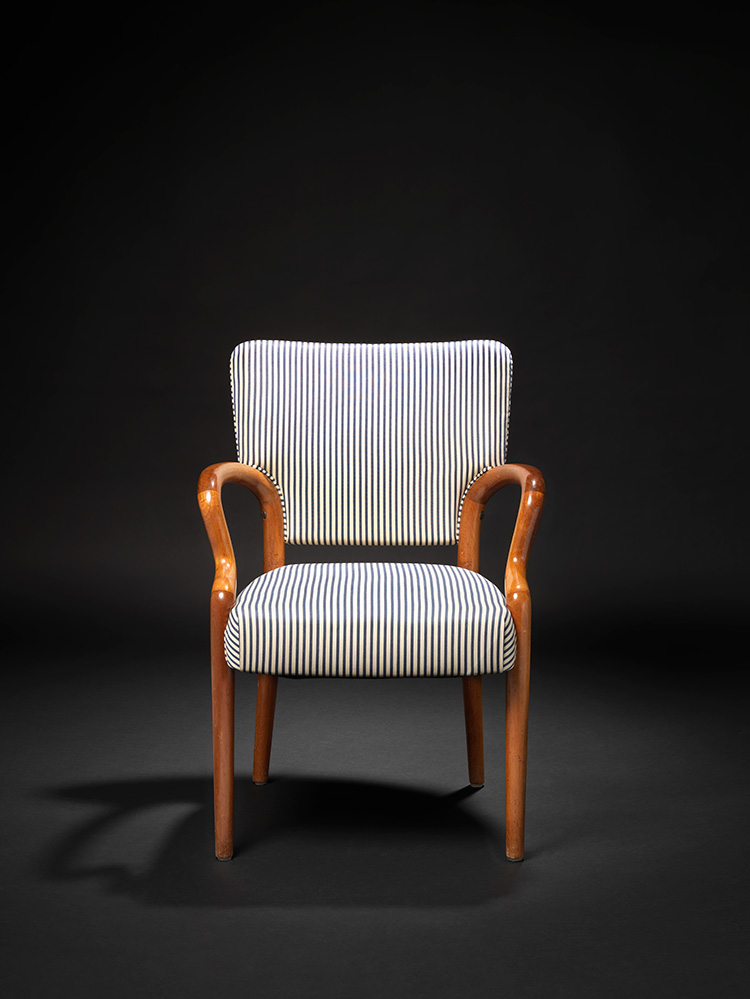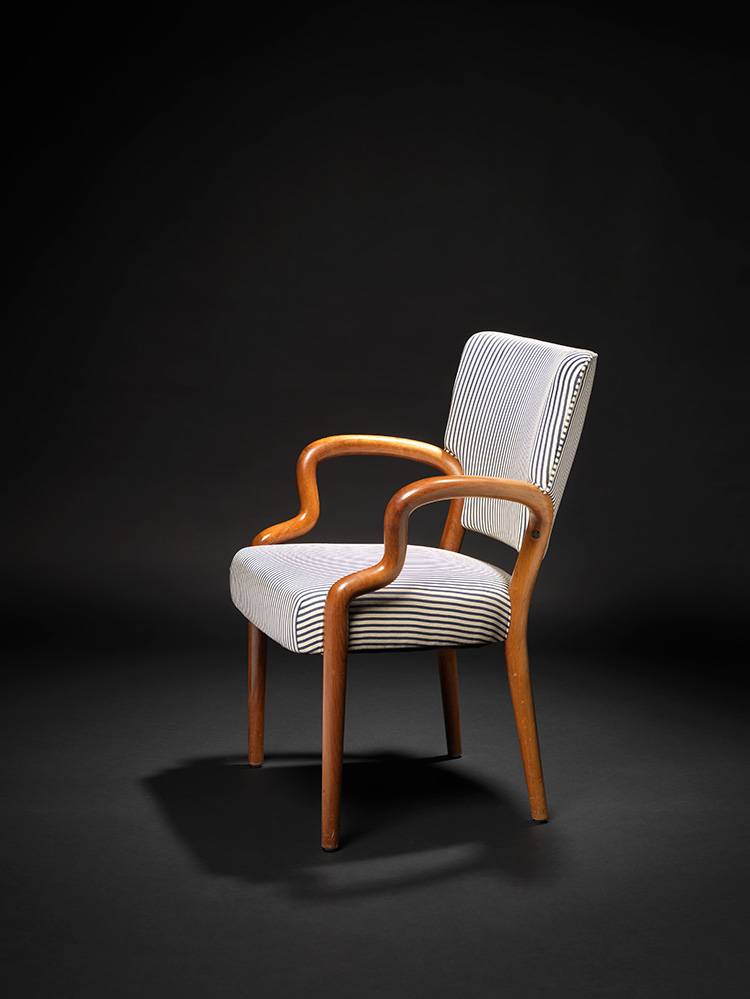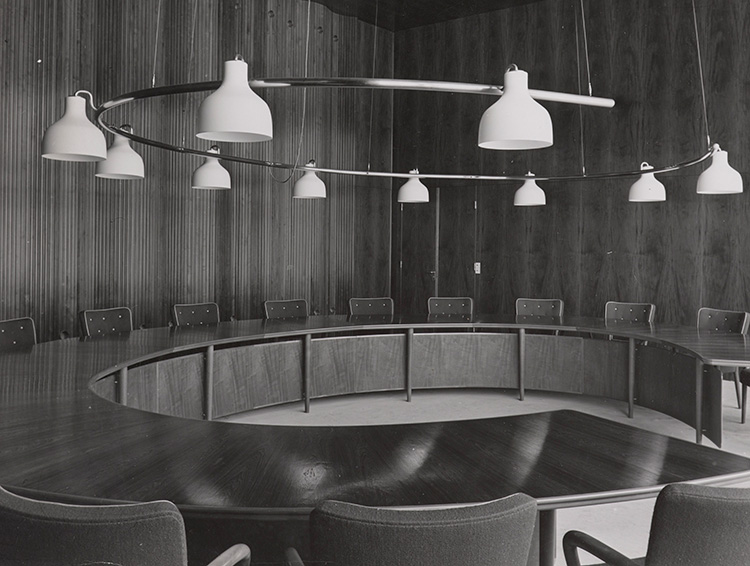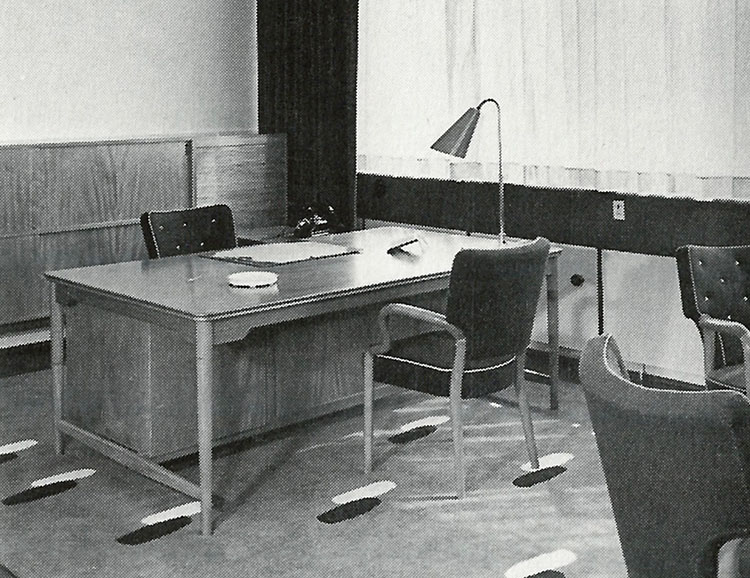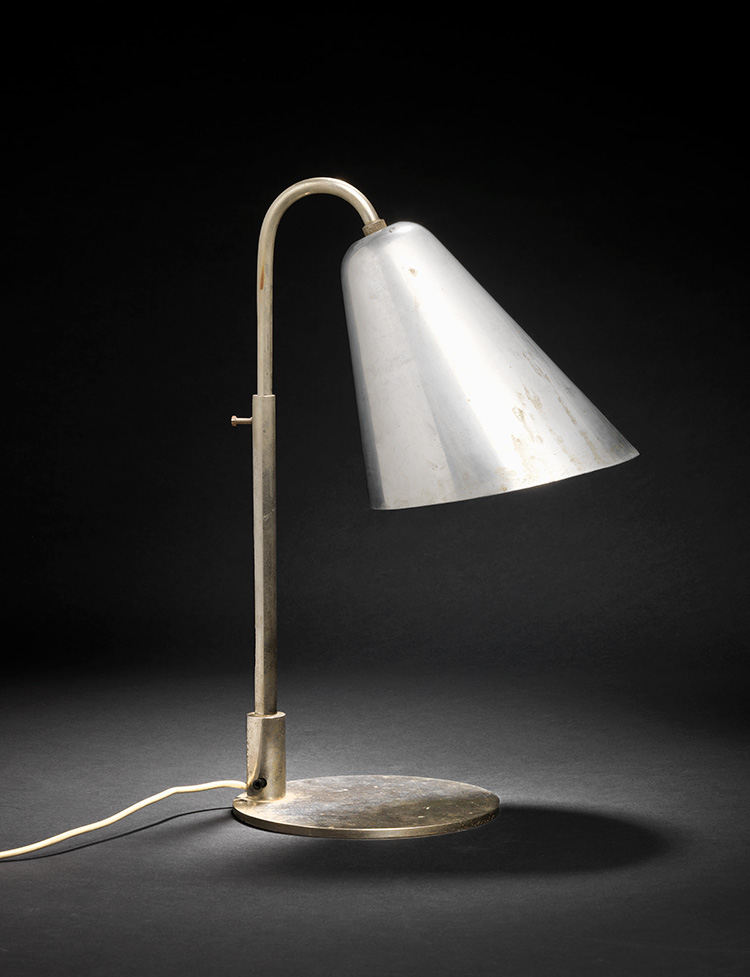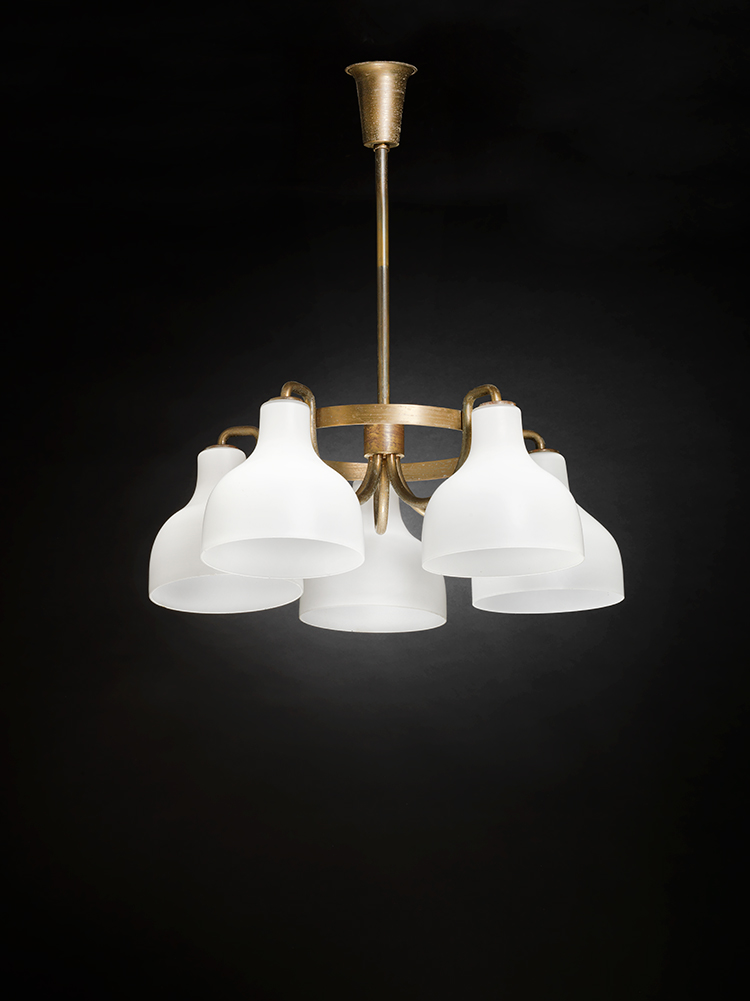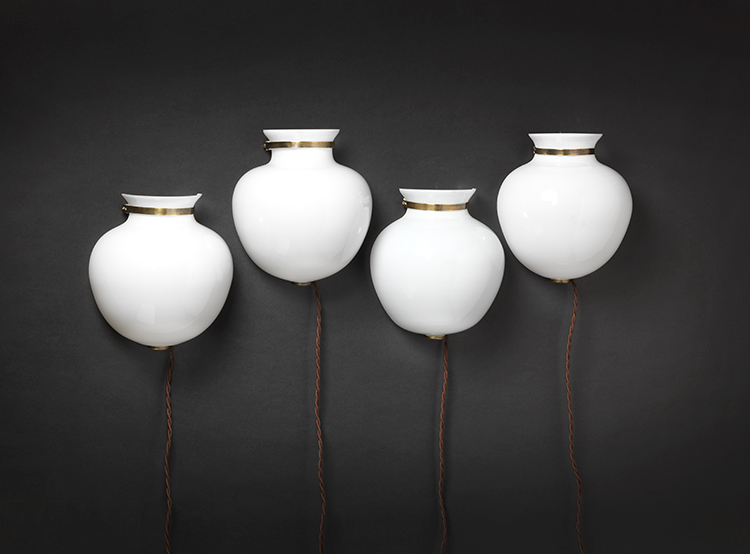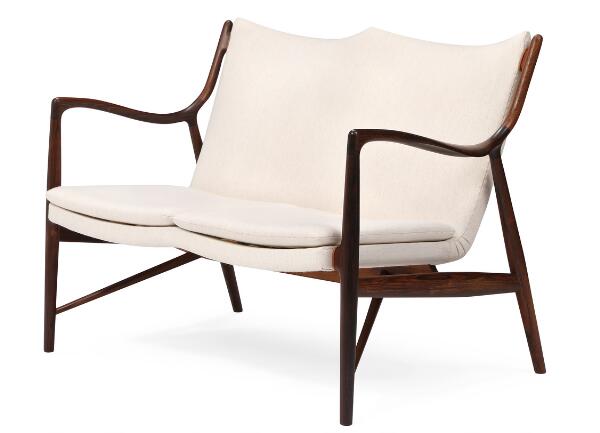Items for sale
Finn Juhl
-
 2509/879Aarhus
2509/879AarhusFinn Juhl: "Diplomat". Rectangular dining table of rosewood. Made and marked by Cado.
Selling
Estimate :
8,000 DKK Next bid:
-
 2509/931Lyngby
2509/931LyngbyFinn Juhl: Rare teak cabinet. Front with door and four drawers. Brass handles.
Selling
Estimate :
20,000–25,000 DKK Next bid: Your bid:
-
 2510/519Lyngby
2510/519LyngbyFinn Juhl: Three-seater sofa with oak frame, upholstered in light and green wool. Made by Søren Willadsen. L 184 cm.
Selling
Estimate :
20,000 DKK Next bid:
-
 2510/543Lyngby
2510/543LyngbyFinn Juhl: 14 teak and Oregon pine shelves. (14)
Selling
Estimate :
15,000–20,000 DKK Next bid:
Poul Henningsen
-
 2509/563Aarhus
2509/563AarhusPoul Henningsen: "PH 4/3". A brass table lamp frame with through-going switch. Manufactured by Louis Poulsen. Circa 1930. H. 54 cm.
Selling
Estimate :
15,000 DKK Next bid: Your bid:
-
 2509/781Lyngby
2509/781LyngbyPoul Henningsen: “PH 4/3”. Table lamp with chromed steel frame, white lacquered metal shades and triangular bakelite socket. H. 56 cm.
Selling
Estimate :
4,000 DKK Next bid:
-
 2509/782Lyngby
2509/782LyngbyPoul Henningsen: "PH 80". Table lamp with chromed metal stem, black plastic base, acrylic shades. H. 68 cm.
Selling
Estimate :
4,000 DKK Next bid: Your bid:
-
 2509/793Lyngby
2509/793LyngbyPoul Henningsen: “PH-4/2,5”. Brass tablelamp frame with white bakelite socket- and switch-house. H. 56 cm.
Selling
Estimate :
2,000–3,000 DKK Next bid: Your bid:

